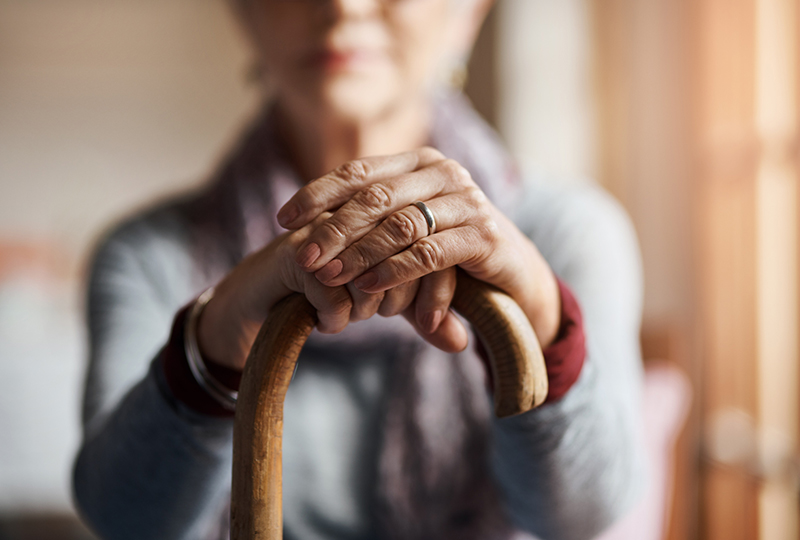Falling is not a normal part of aging, yet it injures many seniors each year. Here are our tips for fall prevention in the elderly.
Falls are the number one cause of geriatric trauma. From hip to head injuries, falls can disrupt life and build fear. Each year, 3 million older people are treated in emergency departments for fall injuries, according to the Centers for Disease Control and Prevention. Fall prevention interventions are crucial, especially as the number of older adults grows.
Currently, the United States has nearly 60 million people who are age 65 or older. And that number is expected to increase to more than 70 million by 2030. As the population of older adults skyrockets, experts predict that falls will also increase.
In 2018, for example, one in four older adults reported a fall, resulting in 36 million falls with 8 million injuries. “The projection for 2030 is 52 million falls, translating to 12 million injuries,” said Cathy Wilson, trauma outreach/injury prevention coordinator for Vanderbilt University Medical Center.
The cycle of fear that falling creates
Despite the fact that falls are prevalent among older adults, falling is not a normal part of aging. That myth perpetuates a vicious cycle of fear, which reduces activity, which can actually lead to a fall and then lead to more fear.
“They tend to isolate themselves and not get out and about in public,” Wilson said. “They stay seated much more and do not go out in the yard or exercise or do the things they want to do, because they become so afraid, it almost paralyzes them.”
What can you do?
If you are worried about yourself or a loved one falling, Wilson recommends enrolling in a SAIL class near you. The acronym stands for Stay Active and Independent for Life, and the classes are taught at several locations around Middle Tennessee and the nation at large. (You can find your local SAIL class via this link.) If you don’t have a SAIL class near you, you can engage with a personal trainer or a physical therapist who specializes in working with older adults. Other good evidence-based programs include tai chi, A Matter of Balance and Stepping On.
“Anything that keeps you moving and working on that core strength helps you,” Wilson said. “If you’re about to fall, it’s easier to catch yourself.” Weight-bearing exercises also keep your bones healthier as you age, which can also help prevent injury in the event of a fall, she added.
Physical activity also helps people build confidence and stop the cycle of fear, especially if they’ve already had a fall.
Wilson also recommends getting regular vision exams, staying up to date on glasses or contact lens prescriptions, and talking with a doctor about medications and their side effects. Side effects, such as dizziness or drowsiness, could increase the risk of a fall. Not all medications can be changed, but your doctor can help you navigate the best course of action for you.
In the home, good lighting and fall-proofing are important. “Survey the home. Make sure there’s no clutter in walkways, or scatter rugs,” she said. “Add grab bars in the tub and near the toilet, and check the lighting at the top and bottom of stairs.”
Some people may dislike the idea of walking aids, but they can increase or maintain independence. “Consider a walking stick, as there are some pretty cool ones out there,” Wilson said. “Even an umbrella touch to the ground can help.”
How to stop yourself from falling
While prevention is key, some falls may happen anyway. In that case, falling the right way might lessen the chance for injury.
“If possible, try not to lock knees or elbows, and continue to roll and go with the fall,” Wilson said. “Think about bending and not being so rigid as you go down.”
Here are few suggestions from a professional stuntwoman. Our instinct is to stop the fall by throwing out our hands, but if we go with it, bent, we might avoid breaking bones.

Care nearby when you need it
If you or your loved one is feeling sick or has a minor injury, Vanderbilt Health offers dozens of locations with convenient hours throughout Middle Tennessee—and can even bring a provider to you.

